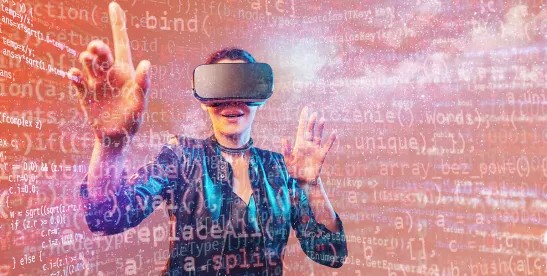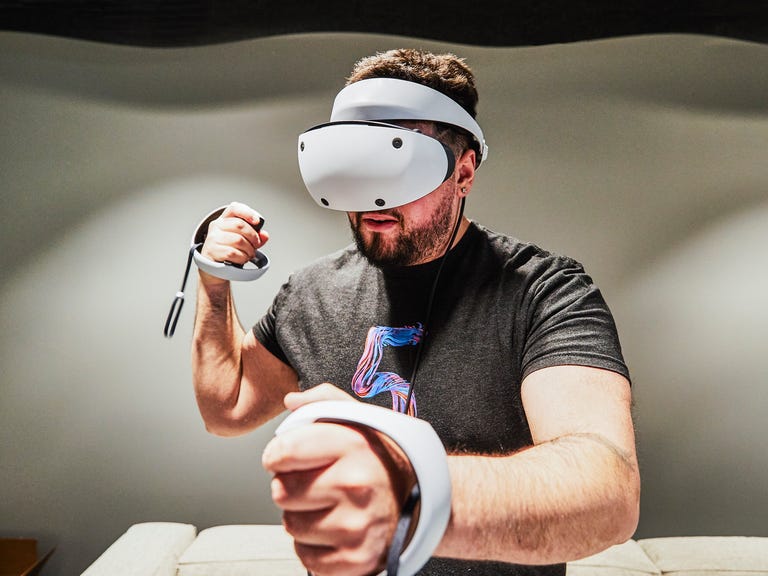
The Next Frontier in Virtual Reality: Graduating from ‘Toys’ to True Immersion
Introduction
In the last decade, virtual reality has leaped from the pages of science fiction into millions of living rooms worldwide. Propelled by accessible, self-contained headsets, the consumer VR market has created a vibrant ecosystem for gaming, social interaction, and fitness. This wave of innovation, a frequent topic in VR Toy News, has successfully positioned VR as a revolutionary form of entertainment. However, a parallel evolution is occurring in laboratories, dedicated entertainment venues, and enterprise environments—one that challenges the very definition of immersion we have come to accept from consumer-grade hardware. A growing chasm separates the popular, controller-based experience from full-body, free-roam systems that engage the entire body and multiple senses. This evolution forces us to ask a critical question: Are our beloved home VR headsets sophisticated ‘toys,’ serving as a gateway to a far more profound reality yet to come? This article explores the technological divide, the implications for the future of interactive experiences, and the journey from living-room scale play to true, untethered immersion, a key focus for AI Toy Innovation News and developers charting the future.
The Current Landscape: From Standalone Headsets to Tethered Powerhouses
To understand where virtual reality is going, we must first appreciate the current landscape, which is largely defined by two categories of consumer hardware. Each offers a distinct balance of accessibility, power, and immersion, shaping the content we see in AI Game Toy News and beyond.
The Rise of Standalone VR
The single most significant catalyst for VR’s mainstream adoption has been the standalone headset, exemplified by Meta’s Quest line. By integrating processors, tracking, and displays into a single, wireless unit, these devices eliminated the need for an expensive PC and external sensors. This “unplug and play” convenience democratized VR, making it as approachable as a gaming console. The technology relies on inside-out tracking, where cameras on the headset map the environment in real-time to determine the user’s position. While revolutionary for its simplicity and affordability, this approach comes with inherent trade-offs. The processing power is akin to a high-end mobile phone, which limits graphical fidelity, physics complexity, and the scale of virtual worlds. This is a critical consideration for developers featured in AI Toy App Integration News, who must optimize their experiences for this hardware.
The Power of PC-Tethered VR
For enthusiasts demanding the highest fidelity, PC-tethered VR remains the gold standard. Headsets like the Valve Index or high-end HTC Vive models connect directly to a powerful gaming computer, leveraging desktop-class GPUs to render breathtakingly detailed and fluid virtual environments. Many of these systems utilize external base stations (“lighthouses”) that emit infrared light, enabling sub-millimeter tracking accuracy for the headset and controllers. This precision is paramount for competitive gaming and professional applications. The result is a premium experience with higher refresh rates, wider fields of view, and uncompressed visual data, pushing the boundaries of what’s possible. However, this power comes at the cost of freedom; the physical tether to a PC and the complex setup process create a barrier to entry and limit movement, confining the experience to a pre-defined space.
The Common Denominator: A Controller-Centric World
Despite their differences, both standalone and PC-tethered systems share a fundamental interaction paradigm: they are centered around head and hand tracking. The user’s primary connection to the virtual world is through handheld controllers. While modern controllers offer sophisticated haptic feedback and finger tracking, your physical body remains largely disconnected from your virtual avatar. You press a thumbstick to “walk” while standing still. This abstraction layer is the defining characteristic of consumer VR and the primary reason some critics view it as an advanced but ultimately limited form of play, similar to how a sophisticated drone from AI Drone Toy News is controlled remotely rather than experienced directly.

Beyond the Headset: The Rise of Full-Body, Free-Roam VR
While the consumer market perfects the living room experience, a more ambitious form of VR is taking shape in dedicated spaces. Known as free-roam, warehouse-scale VR, this technology sheds the limitations of controller-based movement to create a profoundly deeper sense of presence and embodiment.
Defining Warehouse-Scale Immersion
Free-roam VR takes place in large, open environments (often the size of a basketball court) where multiple users can physically walk, run, and interact with their surroundings and each other, untethered. This is achieved through a convergence of advanced technologies that go far beyond a simple headset:
- Backpack PCs: To deliver high-fidelity graphics without a tether, users wear a powerful, custom-built PC in a backpack.
- External Motion Capture: The space is often outfitted with dozens of high-speed motion capture cameras, similar to those used in Hollywood, that track markers on the user’s headset, limbs, and props with pinpoint accuracy. This provides a level of full-body tracking that is currently impossible with consumer hardware, a topic of great interest in AI Toy Sensors News.
- Multi-Sensory Haptics: Immersion is amplified through full-body haptic vests that simulate impacts, vibrations, and other sensations. Environmental effects like wind, heat, and even smells are synchronized with the virtual experience.
- 1:1 Physical and Virtual Worlds: The virtual environment is often mapped directly onto a physical set. When you see a wall or a railing in VR, you can reach out and touch its real-world counterpart, creating a powerful sense of tangibility.
Case Study: Location-Based Entertainment (LBE)
Pioneers like The VOID and Zero Latency demonstrated the incredible potential of this model. In an experience like The VOID’s Star Wars: Secrets of the Empire, participants didn’t just play a game; they inhabited a role. They could feel the rumble of a Star Destroyer under their feet, the heat from a blaster bolt whizzing past their face, and the solid weight of their rifle. This multi-sensory, full-body engagement creates “hyper-reality,” an experience so convincing the brain begins to accept it as real. This is the cutting edge, often showcased in AI Toy Exhibition News, and represents a stark contrast to home-based VR. It’s the difference between watching a movie and being in it.
The Technological Divide: Consumer ‘Toys’ vs. Enterprise-Grade Immersion
The distinction between a consumer headset and a free-roam system isn’t just a matter of scale; it’s a fundamental difference in technological capability and experiential design. This divide highlights why the “toy” label, while perhaps dismissive, originates from a place of tangible comparison.
Processing, Fidelity, and AI
The computational gap is immense. A standalone headset’s mobile chip is designed for efficiency and thermal management. A backpack PC in a warehouse-scale setup is a liquid-cooled beast, capable of running complex physics simulations, photorealistic graphics, and advanced AI behaviors that would be impossible on consumer hardware. This power allows for more dynamic and believable worlds, a crucial factor for the next generation of content discussed in AI Storytelling Toy News and AI Puzzle Robot News. An enemy in a home VR game might follow a simple path, while an enemy in a free-roam experience could react to your full body language, ducking and weaving in response to your actual movements.
Embodiment and Proprioception

Embodiment is the feeling that a virtual avatar is your own body. Consumer VR approximates this with head and hand tracking, but the disconnect created by artificial locomotion (thumbstick walking) constantly reminds your brain that the experience isn’t real. Full-body tracking in free-roam systems bridges this gap. When you take a physical step and your avatar does the same, your brain’s sense of proprioception—its awareness of your body’s position in space—is validated. This seamless link is the key to deep immersion. The latest AI Toy Research News focuses heavily on achieving this state, as it’s the holy grail of virtual presence. Physical props, like a tracked rifle or a magic wand, further enhance this by providing correct weight, grip, and tactile feedback, something that AI Toy Accessories News is trying to replicate for the home market.
Best Practices and Design Philosophy
This technological chasm necessitates different design philosophies. A developer creating a game for a standalone headset must prioritize performance, using clever tricks to maintain frame rate and designing around the limitations of artificial movement. Conversely, a designer for a free-roam experience thinks like an architect and a theme park engineer, focusing on environmental storytelling, physical safety (ensuring players don’t walk into walls), and multi-sensory engagement. This is a core topic in discussions around AI Toy Design News and the future of interactive entertainment.
Navigating the Future: Applications, Challenges, and What’s Next
While warehouse-scale VR is currently a niche, premium experience, the technological advancements it pioneers will inevitably trickle down to the consumer market. The journey ahead involves overcoming significant challenges and exploring applications far beyond gaming.
Applications Beyond Entertainment
The level of realism and immersion offered by high-end systems is a game-changer for professional fields. Architects can physically walk through their designs before a single brick is laid. Surgeons can practice complex procedures in a zero-risk environment. Firefighters can train for hazardous scenarios that are too dangerous to replicate in real life. These enterprise applications are driving much of the innovation in haptics and tracking, providing a glimpse into a future where AI Learning Toy News might report on a virtual chemistry set that offers a completely safe, hands-on lab experience for students.
The Path to Convergence
Bringing this level of immersion home faces three major hurdles: space, cost, and complexity. Most people don’t have a dedicated warehouse for VR. However, technology is steadily closing the gap:
- Advanced Inside-Out Tracking: Headsets are beginning to incorporate AI-driven, camera-based tracking for the full body, eliminating the need for external sensors.
- Affordable Haptics: Companies are developing consumer-grade haptic vests, gloves, and even full-body suits that are becoming more accessible.
- Compact Locomotion Solutions: Omnidirectional treadmills and specialized footwear are shrinking in size and cost, offering a way to achieve infinite walking in a limited space.
- The Rise of Mixed Reality: The integration of high-resolution cameras on VR headsets (a hot topic in AR Toy News) allows for free-roam experiences within our own homes, as virtual objects are overlaid onto our real-world environment, removing the risk of collision.
As these technologies mature, the clear line between “consumer toy” and “professional simulation” will blur, a trend closely watched by those following AI Toy Trends News.
Conclusion
To label consumer VR headsets as mere “toys” is to overlook the profound impact they’ve had on making virtual reality a tangible reality for millions. They are not toys in a pejorative sense, but rather brilliant, accessible platforms that represent a crucial step in a much longer journey. The true distinction lies in the degree of immersion. While home VR engages our eyes, ears, and hands, the next frontier—pioneered by warehouse-scale systems—aims to capture our entire being. These advanced platforms demonstrate the immense, untapped potential of VR to be a medium that doesn’t just show us another world, but allows us to physically step into it. The future of VR Toy News will not be about a single device, but about a spectrum of experiences, from the casual living room game to the fully embodied virtual adventure, as the groundbreaking innovations of today become the consumer-grade reality of tomorrow.



